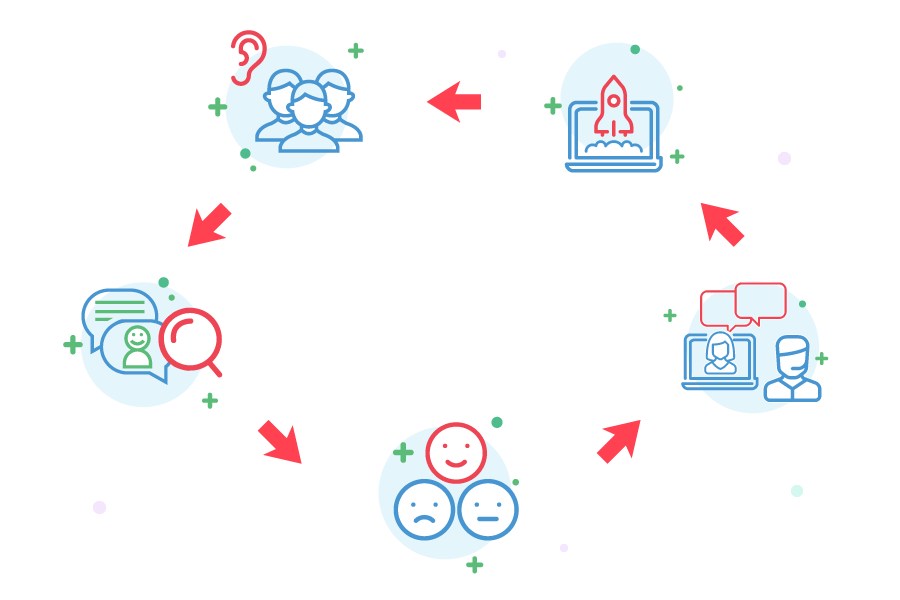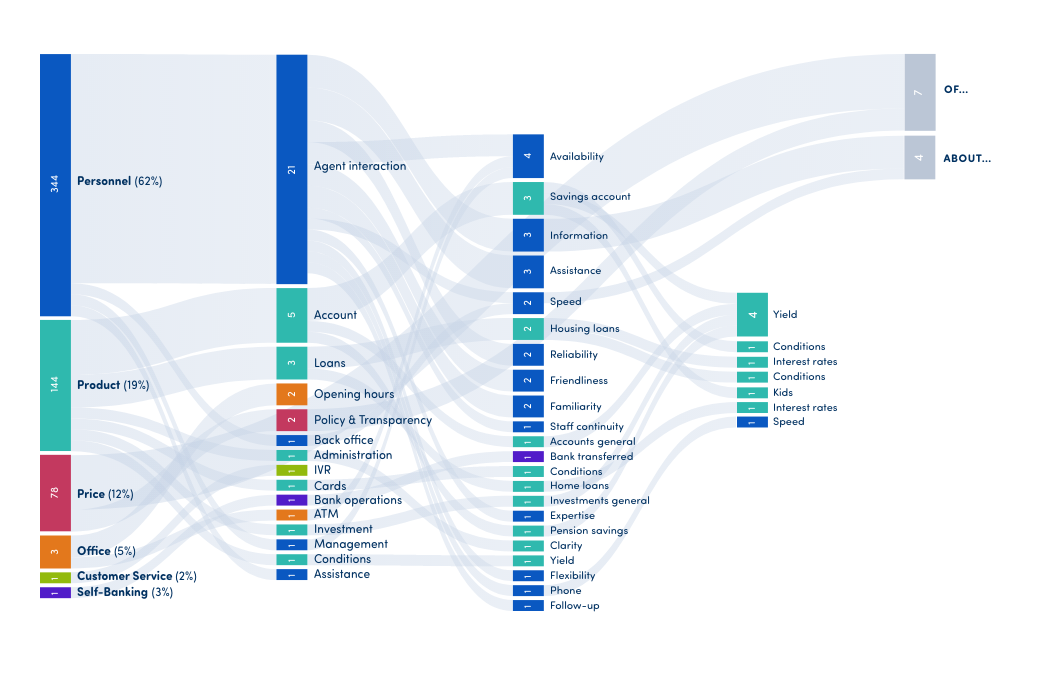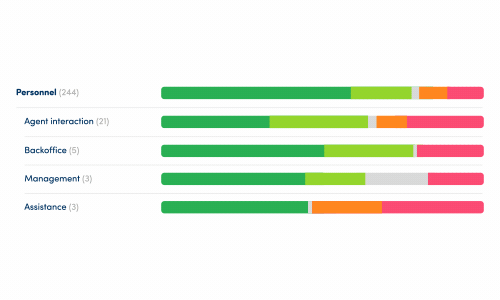en
When it comes to great companies that go above and beyond, there is one characteristic that clearly stands out. They listen to their customers. A voice of the customer program helps you bring in customer feedback at all times, even when your servicing millions of customers all over the world.
When a company is still small, customer feedback is easy. You know your customers. You talk to them. But when your company grows, this gets harder. Contact with customers becomes more indirect and their feedback doesn't always reach the right person. This is exactly what a VOC program fixes. It's a program that helps you collect, analyze, and follow up on customer feedback, both in an ad hoc and structural way.
VOC or Voice of the Customer means that you as a company gather and analyze the feedback, needs and preferences of your customers in order to improve your products, staff, processes or services. It's a type of market research that includes customer feedback analysis, in-depth interviews and ethnographic research. However, there are some distinctive differences between market research and voice of the customer.
Once this research is done, the insights gleaned are being transformed into prioritized projects, programs or backlog items that aim to improve the customer experience. These are hierarchically ordered and based on actual customer feedback, hence the name 'Voice of the Customer'.
It typically is a practice that is especially popular in product development but has since been used to improve processes and services as well in bigger companies.

The voice of the customer methodology is built around a continuous loop of gathered customer feedback, turning the latter into insights based on which you can improve your product. This renewed iteration of your product will again lead to more feedback that you can categorize, analyze and turn into action points. So, in the end, you'll be repeating the following steps:
The first thing you need to do in a Voice of the Customer (VoC) program is - of course - to actually gather feedback from your customers. You can do this in either a quantitative or qualitative way, but a best practice is to combine both approaches.
According to Gartner, there are 3 types of feedback you can capture:
There are a lot of questions you can ask to your customers to collect feedback. Ultimately, you want to make these as open as possible so as not to steer your customer in any way. That said, you can get the conversation going with some of the following topics:
You can find more voice of customer question examples here.
When you start intentionally gathering customer feedback, you'll quickly notice your next challenge: the volume of input that needs to be processed. For a good customer feedback analysis, it's important to centralize feedback and have an objective way to turn it into insights. That's why at Hello Customer we believe that linguistics and sentiment analysis is key in this process.
When your customer feedback is analyzed and categorized, you need to turn it into useful insights. Which part of your offering is performing well; which part is not? Are there recurring complaints and can you link them to a specific location, process or product?
In the end, it's all about root-cause analysis of both positive and negative customer feedback.

When receiving this amount of customer feedback, you need to be able to categorize it at scale to make sense of what most of your customers are actually saying. Is it the food at your restaurant? Is it the friendliness of your broker agent? You need to drill down to define the root-cause of the feedback.
This is where the magic combination of artificial intelligence and linguistics works its magic. You can spare employees the tedious task of having to sift through tons and tons of feedback to categorize it.

Once you've successfully grasped the content and intent of the customer feedback, you can move on to adding the layer of sentiment analysis to your feedback. Were customers being positive or negative about your product? It's an important insight to have at scale, so you can start making effective improvements.
Sentiment Analysis checks whether the comment that was made was in fact meant positively or negatively. It can be applied to all sorts of feedback from online customer reviews to customer support calls.
The strength of a VOC program lies in its ability to go full circle. If you're only gathering and analyzing customer feedback and doing nothing more, then inevitably nothing will change and nothing will improve. The best practice is to get a cross-functional team together that combines people from Customer Service / Support, Operations, Sales and top-level management.
Those people should be informed about the VOC analysis that has been performed and together take responsibility to make the changes and improvements recommended by the voice of the customer, a reality.
Check out how Hello Customer can help you out with customer feedback analysis.

Subscribe to the Hello Customer newsletter and receive the latest industry insights, interesting resources and other updates.